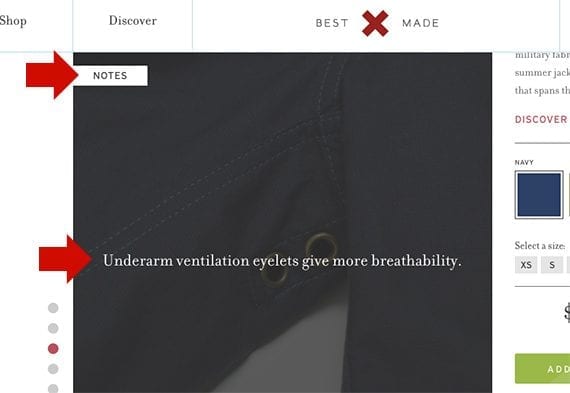The words and pictures online retailers use to convey a product’s value have an impact on that retailer’s conversions.
Merchants responding to an October 2016 Forrester survey reported an average desktop ecommerce conversion rate of 4.2 percent. By way of comparison, brick-and-mortar stores are believed to have an average conversion rate of between 14 percent and 20 percent, depending on industry segment.
Given that it can be relatively difficult for online sellers to drive website traffic, ecommerce conversion rates have been closely associated with ecommerce success. This association makes conversion rate optimization — CRO — a high priority for some online retailers.
Ecommerce Product Content
While many factors could impact a website’s conversion rates, how well a shopper understands a product almost certainly affects whether or not that shopper makes a purchase. So focus at least some of your business’s CRO efforts on product content — the words and pictures used to describe the items you sell.
For example, Shotfarm, a provider of product images, surveyed 1,500 consumers in 2015 and 2016 and found that 95 percent of respondents believed that online product descriptions were important (17 percent) or very important (78 percent) to their buying decisions.
The same survey found that complete product information, including a good product description, a high-resolution image, and similar had the potential to also build customer loyalty, reduce shopping cart abandonment rates, and stave off returns.
Pictures and Videos
Conversion-boosting product content may start with product pictures and videos.
It is often noted that unlike the experience of shopping in a traditional store, online customers cannot touch a product before they buy it — thus the need to show a shopper what he’s getting with pictures and videos.
Many studies and surveys have attacked the question of how images specifically address ecommerce conversion rates. In 2014, Bright North, a provider of data feed technology, reported that high-quality product images converted at a rate three times better than relatively low-quality images. But rather than focusing on anecdotal conversion statistics, try to use your product images and video to convey your item’s value to shoppers.

Best Made uses many and varied product images to help communicate value.
For example, ecommerce retailer Best Made was using, at the time of writing, five quality photographs to show its Panama Cloth Field Jackets.
Some of the images showed the jacket overall from the front and back. Others focused on specific product details and include notes to accompany the pictures. Taken together, the pictures helped explain why the jacket was worth its $228 price tag.

Best Made used product images to show shoppers some of the jacket’s specific features.
As another example, Williams-Sonoma includes videos with many of the items it sells. If you shop for a KitchenAid food processor attachment, the company will show you a video describing how you could use it, in addition to several product pictures. This video communicates the product’s value, encouraging a sale.

Williams-Sonoma uses product videos to help show shoppers how they might use the item when they buy it.
Online clothing brand BlackMilk typically shows five images on each of its product detail pages, helping to visually describe its products. But the company goes further, asking customers to submit their own product images via hashtags shared on social media.
These customer-supplied product photos show new buyers how the product “really” looks on a “real” person and offers social proof to, again, encourage a sale.

The customer-supplied product images on BlackMilk’s site may give new shoppers a better idea of what a product looks like and how it might fit.
Experiment with how you communicate your product’s value with pictures and video. Measure your results and optimize based on what you learn.
Words to Inform
Just as product photography and video should show products to a shopper, your words should also help our customers understand.
“Your product description is there to provide value and information that helps the customer make a decision,” wrote CRO expert Neil Patel in an article about ecommerce conversion.
“The best sales copy is rich with information. Lots of information sometimes produces a long product description. Don’t fear long descriptions. Truly engaged customers will read it all. Be sure to use formatting to make the text scannable and digestible.”

The Home Depot is an example of a site that often uses long, informative product descriptions to help shoppers make relatively complex buying decisions.
Patel also pointed out how the Home Depot adds an extra section of product information to provide just this sort of rich product information.
Try A/B testing a few product descriptions. Do you get better conversions with one description over another? Measure your results and keep optimizing.
Beyond Conversion Rates
Ecommerce conversion rates are often associated with ecommerce success. But it is important to remember that a conversion rate is not the only metric that matters or even the single most important metric for every ecommerce business.
David Sasson, co-founder of OverstockArt, as an example, prefers focusing on dollars per visit instead of conversion rate. Other ecommerce merchants focus on customer loyalty and repeat sales.
As you work to use words and pictures to improve your ecommerce conversion rate, make certain that you’re also improving your business overall.




